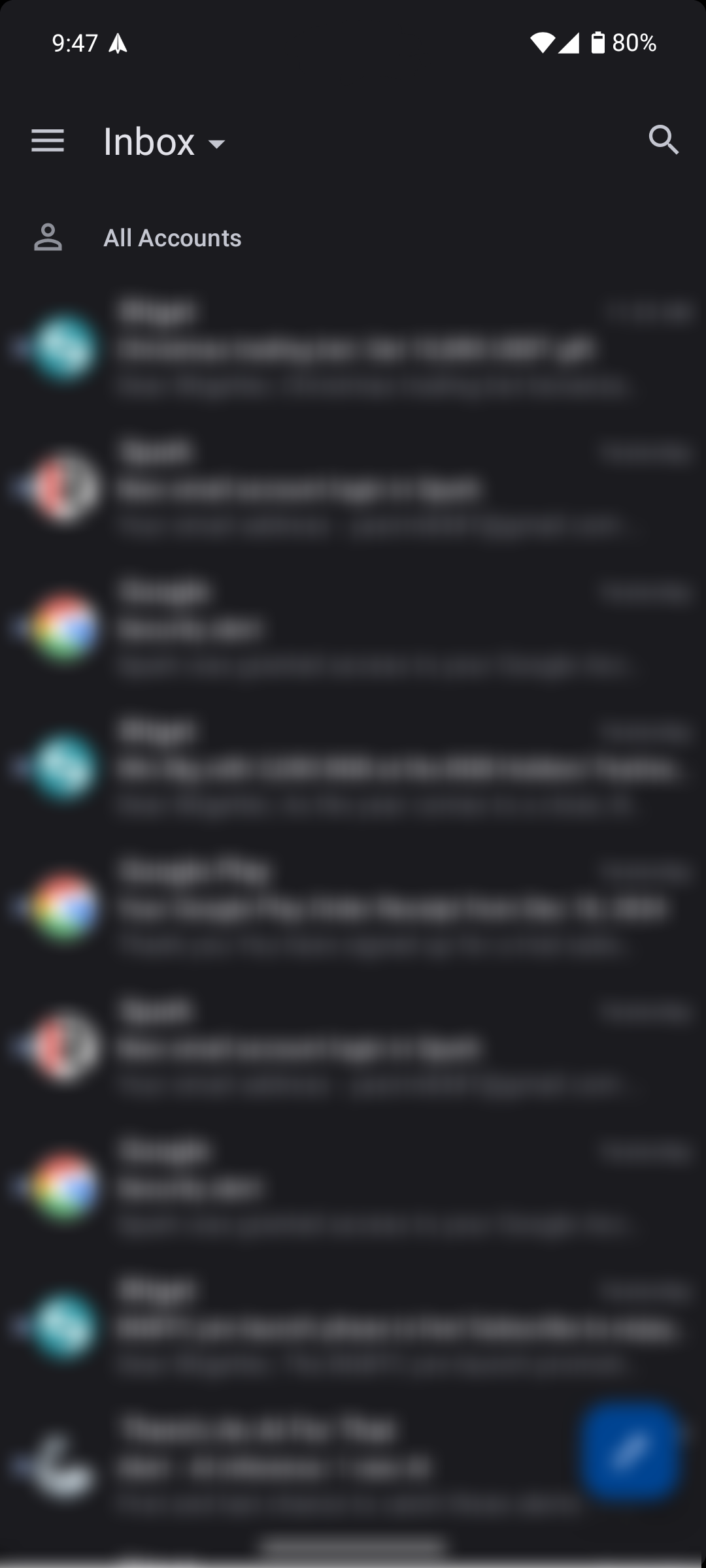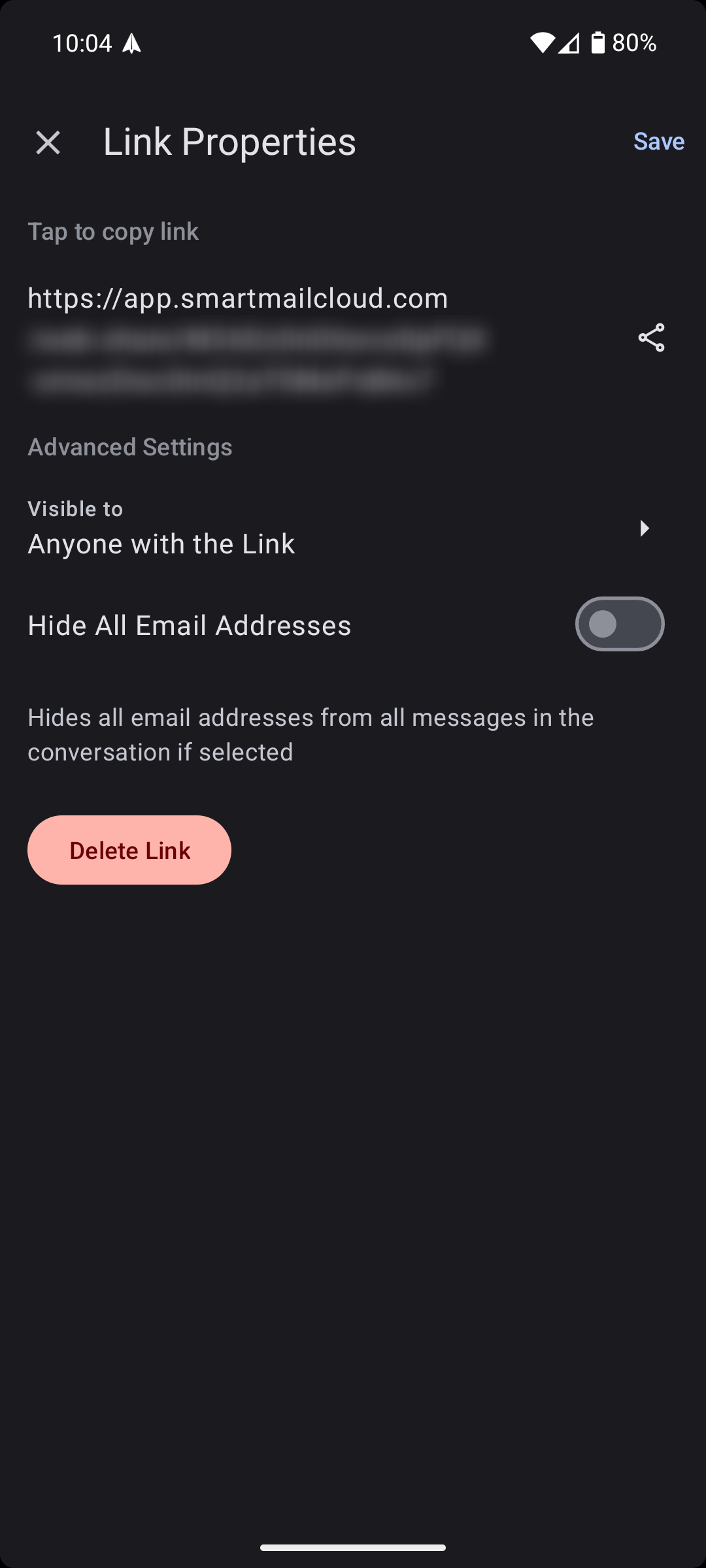As a longtime Gmail user, I recently took a leap and switched to the Spark Mail app on my Android phone. I wanted to see if it could simplify my email experience without sacrificing functionality. Spoiler alert: It exceeded my expectations on multiple fronts.
Spark’s Interface Won Me Over
Spark’s modern interface immediately caught my eye. The clean navigation panel on the left keeps basic email folders like inbox, sent, and trash easily accessible.
Less frequently used folders are tucked away to minimize clutter. This thoughtful organization sets Spark apart from the Gmail app, which can sometimes feel cluttered and overwhelming.
You can also add more folders like recently seen, snoozed, shared drafts, and reminders using the Edit List option. This customization allows you to tailor the app to your specific needs and preferences.
Additionally, any meeting notes you create in Spark for the desktop app can be easily accessed from the app’s sidebar on your phone.
Both individual and unified inboxes offer identical functionality for organizing emails. For each inbox, you can choose between three views: Classic, Smart, and Smart 2.0.
These views provide varying levels of email organization and categorization, allowing you to manage your inbox in a way that best suits your workflow.
Spark’s gesture-based actions are another reason I chose it over the Gmail app. Swiping an email to the right marks it as read or unread while swiping left allows you to pin or delete it.
These gestures can be customized in the settings, where Gmail’s gestures are more limited and less customizable.
Smart Inbox Automatically Prioritize Emails
In Spark, important emails, like those from clients or colleagues, are front and center. Less crucial emails are neatly organized for later review. This is because Spark’s smart inbox automatically sorts incoming messages into categories.
The Classic view presents all emails in a unified inbox, sorted chronologically. Meanwhile, the Smart view intelligently categorizes emails into Personal, Notifications, Newsletters, Pins, and Seen, making it easy to identify and prioritize important messages.


Smart 2.0 takes this a step further, allowing you to customize the inbox by adding or removing categories based on preferences. While Gmail offers categories like Primary, Social, and Promotions, Spark’s smart inbox options feel more intuitive and adaptable to my needs.
When using Smart 2.0, the app has a Gatekeeper feature at the top of the inbox that screens emails from new senders and gives the option to block emails immediately, saving you time and energy that would otherwise be spent clearing your inbox later.
Spark also offers handy features like Group by Sender, which consolidates emails from the same sender into a single thread. And, if a conversation becomes irrelevant or distracting, you can quickly mute it—a feature I’ve come to rely on for maintaining focus.


To use Prioritize features, you’ll have to switch to a paid plan, which starts at $4.99 per month if billed annually.
I Can Easily Share Email Conversations as Web Pages
Spark’s ability to share entire email conversations as web pages is a feature I never knew I needed. Instead of the cumbersome process of forwarding emails back and forth, Spark creates a unique link that displays the latest version of the conversation.
This means any emails sent or received after sharing the link are automatically included. It keeps everyone in the loop without the constant hassle of forwarding messages.
It’s a small but handy feature that makes collaboration easy, saves time, and reduces inbox clutter.


The app also allows you to connect third-party services, like your preferred task manager, directly to your email. With just a few taps, you can create tasks from emails and include a link back to the original message.
This integration eliminates the need to switch between apps, copy information, and manually create tasks. By connecting your email and task manager, Spark helps you stay organized and on top of your to-do list without the extra effort.
Not just that, Spark Cloud provides 5GB of cloud storage so that you can send attachments larger than the 25MB limit imposed by most email providers like Gmail. This is particularly useful when dealing with large files that exceed attachment size restrictions.
Spark is Focus Centric
Spark’s unified inbox consolidates emails from multiple accounts into a single inbox, so I no longer need to waste time switching between accounts. Hence, I can manage my messages more efficiently and stay on top of important conversations.
The Smart Inbox feature takes this a step further by intelligently sorting emails based on importance to prevent emails from lowering productivity.


Spark’s smart notifications also play a key role in maintaining focus. By only being alerted to important emails, I avoid the constant distractions of irrelevant messages.


The search bar may not have visible filters, but they’re incorporated into the search functionality itself.
For example, if I type “PDF” into the search bar, Spark will instantly display only the emails with PDF attachments. Simply typing “attachments” will show all emails with attachments. This eliminates the need for manual filtering.


I Save Time and Effort With Spark’s +AI Features
Spark’s +AI features are another reason I upgraded to the premium individual subscription. With the Compose with +AI feature, I can generate emails that match my writing style and tone.
By saving a few sample emails or allowing Spark to scan the emails I send, the app automatically adapts to my preferred style. I can also manually select from friendly, neutral, or formal tones and set the desired text length from short to long.
The +AI Summary feature is another time-saver. With just a tap, I can generate a summary of an email in my inbox. I have the option to choose between short, detailed, or action-point-based summaries, depending on my needs.
Spark’s +AI makes it easy to reply to emails. I usually create email templates as a starting point for common responses. If I insert a template, the app automatically adapts it to match the content of the incoming email.
This is handy since I can respond to messages quickly without spending time on manual adjustments.
Spark is a good alternative to the Gmail app for anyone seeking a unified approach to email management. It features a consolidated inbox, smart sorting, focused notifications, and advanced search functionality on the phone.
Spark’s design and features make it a top choice for efficiently managing your inbox, so download Spark and give it a try today. You can also take things a step further by looking at additional features to optimize email productivity in Spark.
